Composite Bonding
Minimal-prep refinements to repair chips, close small gaps and improve symmetry — colour-matched and sculpted for a natural finish.


Refines shape, closes small gaps, repairs chips
Composite bonding uses tooth-coloured resin to enhance edges and surfaces without removing healthy enamel. It’s ideal for subtle shape changes, small fractures and seamless colour blending.
“Planned carefully. Sculpted with precision. Finished to look like it grew there.”
At Aura, we use DSLR photography, shade mapping and meticulous polishing to deliver durable, natural results.
Before & Afters
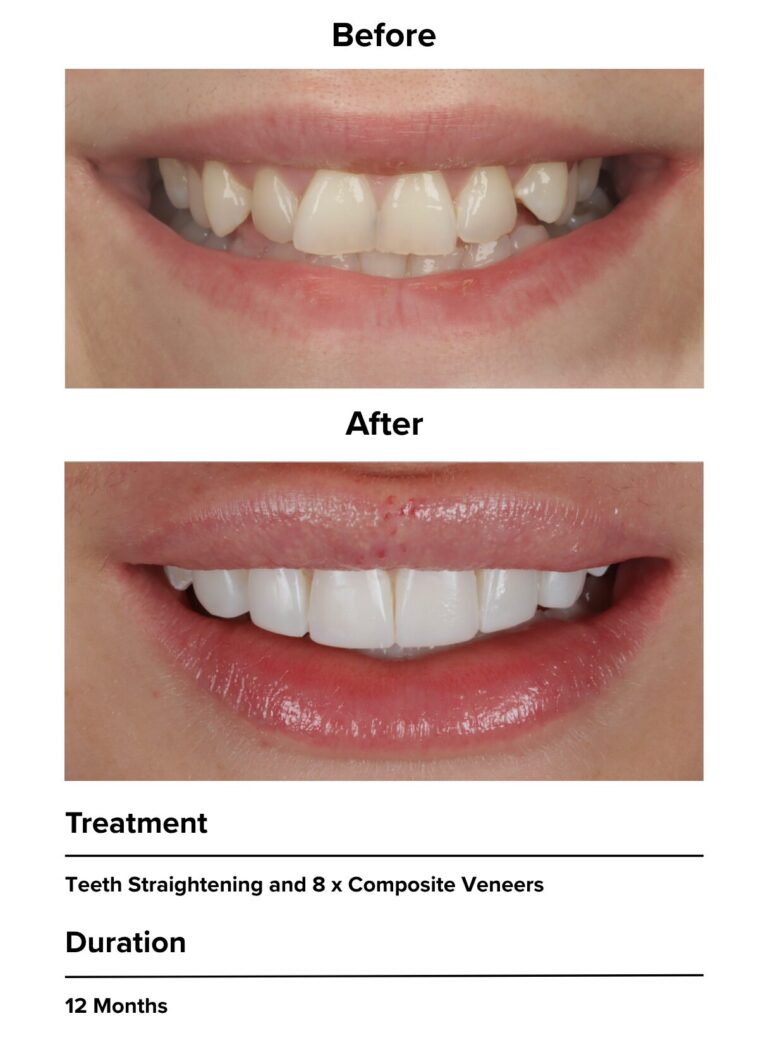
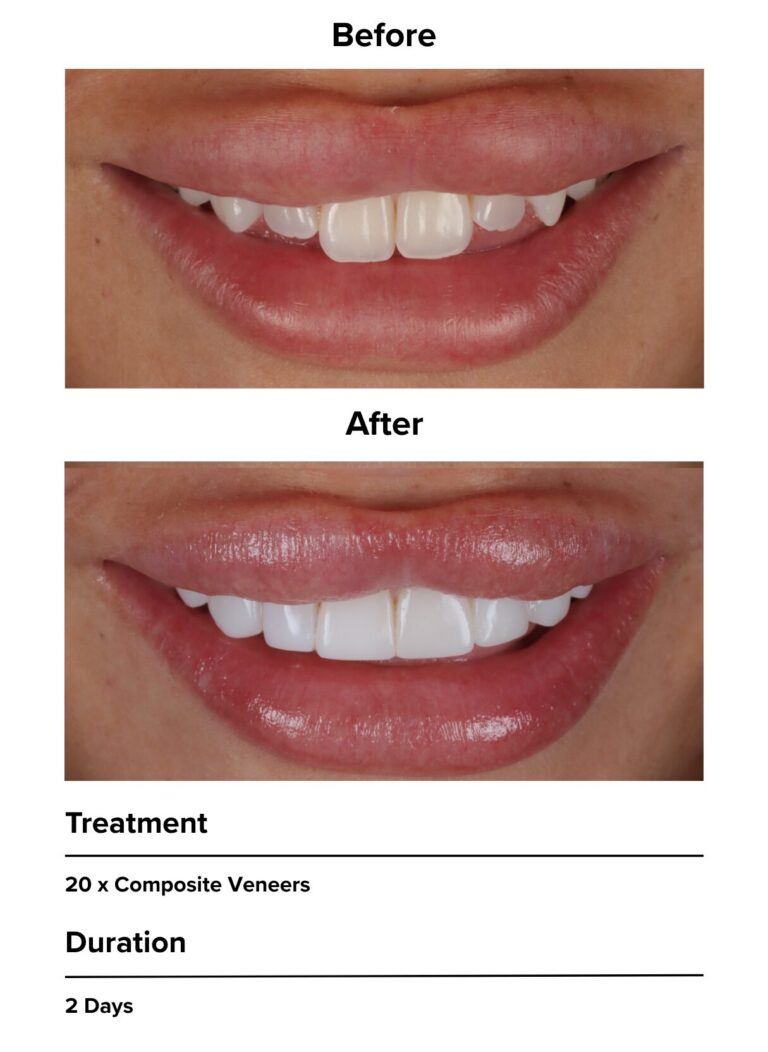
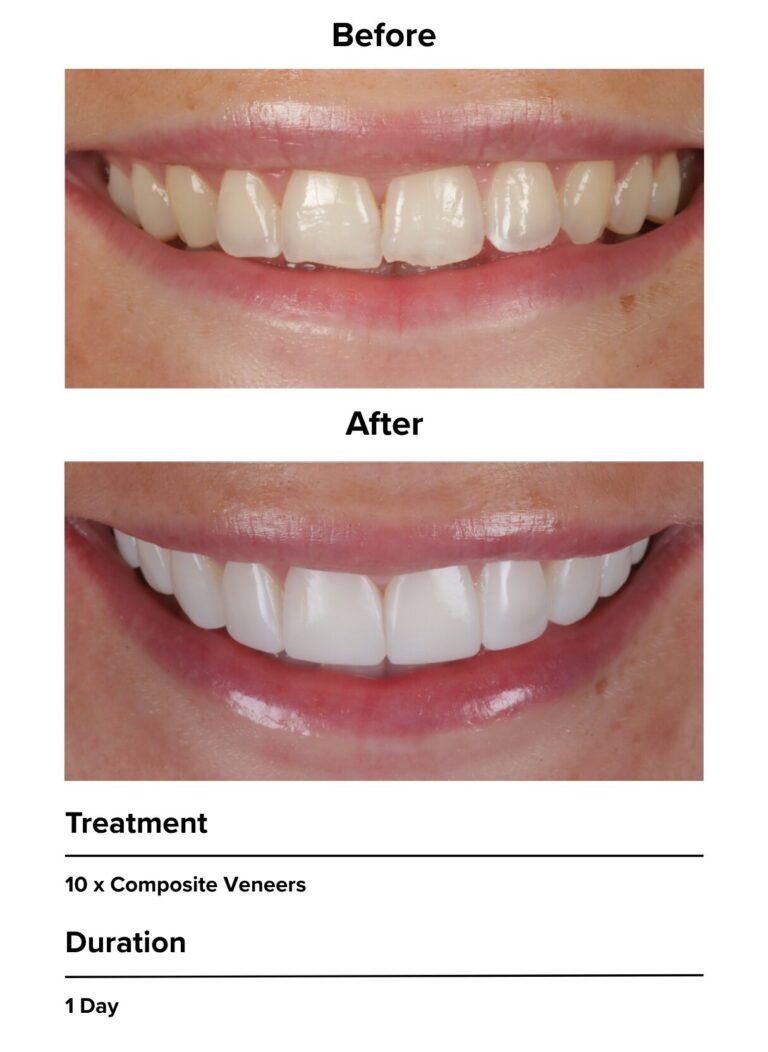
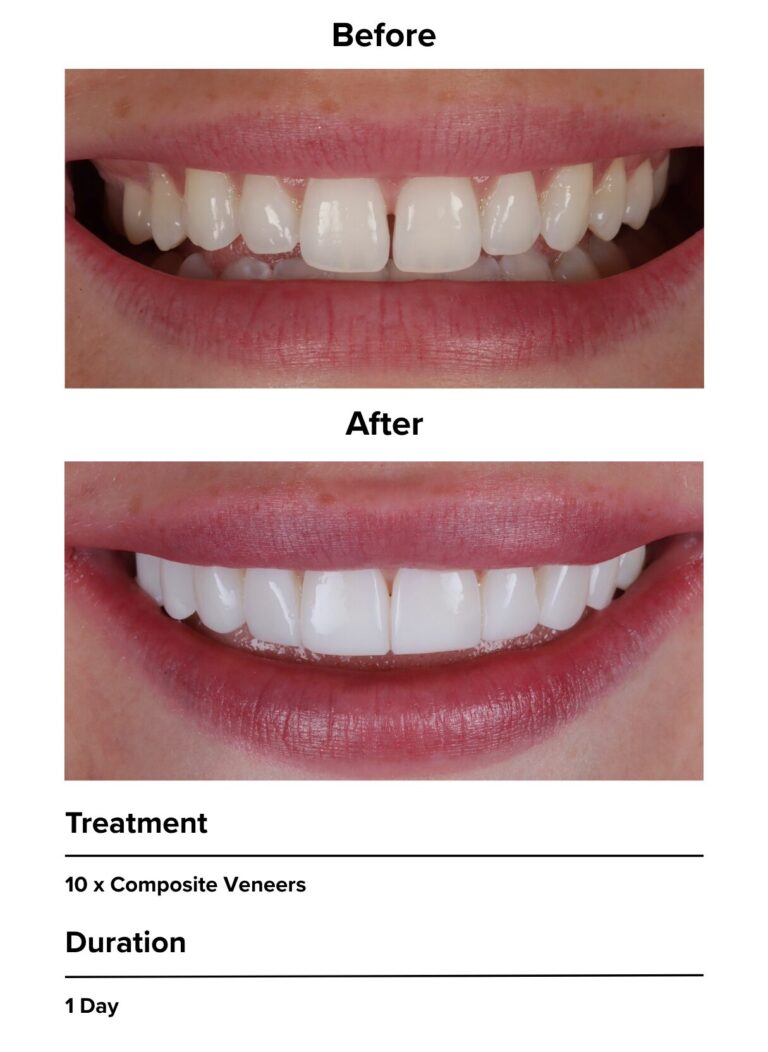
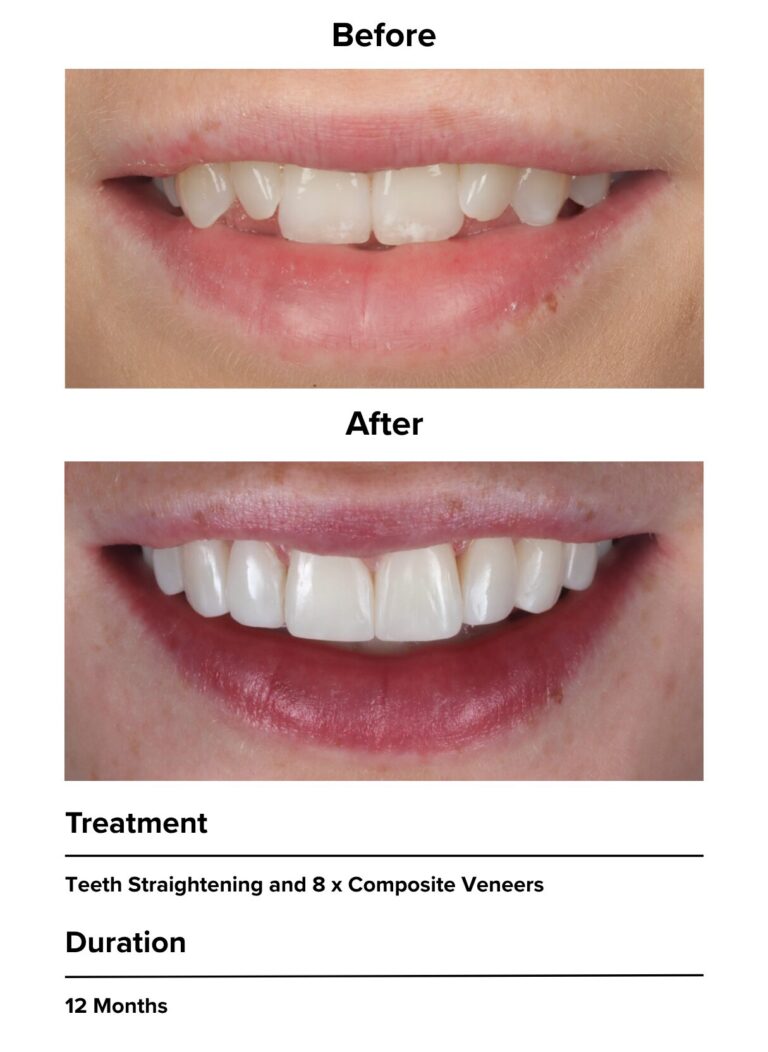
See the process
Short clips from our clinic showing chairside composite bonding in action.

Is composite bonding right for me?
- Small chips or fractures on front teeth
- Mild edge wear or uneven lengths
- Tiny gaps (black triangles) or minor asymmetry
- Colour and surface refinement after Invisalign® or whitening
If teeth are heavily worn, rotated or discoloured, we may discuss Invisalign®, whitening or ceramic options.
How we do bonding at Aura
Consultation & shade mapping
Photography, smile goals and enamel assessment. We plan additively and confirm shade and translucency.
Planning & consent
We align expectations with photos/examples, agree where bonding will be added and explain care and longevity.
Bonding & sculpting
Layering and contouring composite to blend with your natural tooth anatomy and light reflection.
Polish & aftercare
High-gloss finishing and guidance on maintenance. Review appointment if needed for micro-adjustments.
Composite Bonding: Questions & Answers
What is composite bonding?
Composite bonding is the application of tooth-coloured resin to reshape edges, close small gaps, repair chips and refine symmetry without drilling healthy enamel.
Is composite bonding painful?
No injections are typically needed. Treatment is gentle and additive, making it one of the least invasive cosmetic options.
How long does composite bonding last?
Most patients enjoy 3–7 years depending on bite, hygiene and habits. Periodic repolishing can refresh the shine and extend longevity.
Does bonding damage my teeth?
Bonding is additive. We preserve enamel and place material on top to achieve the desired shape and finish.
Will composite bonding stain?
Composite can pick up surface stain over time from coffee, red wine and smoking. It can be polished back to a high gloss during maintenance visits.
Can I whiten after composite bonding?
Whitening lightens natural teeth, not composite. We usually whiten first, then colour-match the bonding to the brighter shade.
Is composite bonding good for gaps between front teeth?
Yes — small spaces and black triangles can often be closed predictably with bonding while keeping the result natural.
Composite bonding vs veneers — which is best?
Bonding is minimally invasive and reversible; porcelain veneers are stronger, more colour-stable and suited to bigger changes. We’ll advise the least-invasive option to meet your goals.
Can bonding fix chipped or uneven edges?
Yes. It’s ideal for re-creating crisp, even incisal edges and repairing small fractures.
How long does the appointment take?
Most cosmetic bonding cases take around 1–2 hours depending on the number of teeth and complexity.
Is composite bonding suitable after Invisalign®?
Absolutely. Subtle edge bonding or contouring is often the final step after orthodontic alignment to perfect shape and symmetry.
Will bonding feel rough or bulky?
No. We sculpt anatomy and polish to achieve a smooth, natural texture that blends with your enamel.
Can bonding fix worn teeth?
For mild edge wear, yes. Heavily worn teeth may benefit from orthodontics or ceramic restorations; we’ll guide you to the right plan.
How do I care for composite bonding?
Normal brushing and interdental cleaning, avoid biting hard objects, wear a night guard if you clench, and book routine hygiene/polish visits.
Will I need to replace the bonding in the future?
Composite is repairable and modifiable. Over time it can be refreshed, repolished or replaced without harming the tooth.
Is composite bonding reversible?
Yes. Because the procedure is additive and conservative, it is generally reversible and can be adjusted or removed.
Can you do a single tooth?
Yes. Single-tooth bonding is common for chips or shape mismatches and can be colour-matched precisely.
How much does composite bonding cost?
We tailor treatment to your goals and tooth anatomy, so fees are discussed at consultation. See our fee guide for POA ranges.
Is composite bonding covered by the NHS?
Cosmetic bonding is usually a private treatment. We’ll discuss options, timelines and payment plans where appropriate.
Can bonding be done the same day?
In many cases, yes — especially for single teeth or edge refinements. Multi-tooth smile enhancements may require a longer visit.
Does bonding help with sensitivity?
It can, when used to cover exposed dentine or protect worn edges.
What material do you use?
Premium nano-hybrid composites that m
Start Here
Submit your Composite Bonding Enquiry
Composite Veneers by Aura
Achieve a Stunning, Natural-Looking Smile in Just One Visit



How does Composite Bonding Work?
A putty-like material is moulded onto your teeth and sculpted into the desired shape. This is then shaped and polished to achieve a high shine. At this stage you are shown the result, composite can be added or removed as you desire.
Does it hurt?
The process of composite bonding is pain-free, with minimal to no drilling required, as well as no injections needed either.
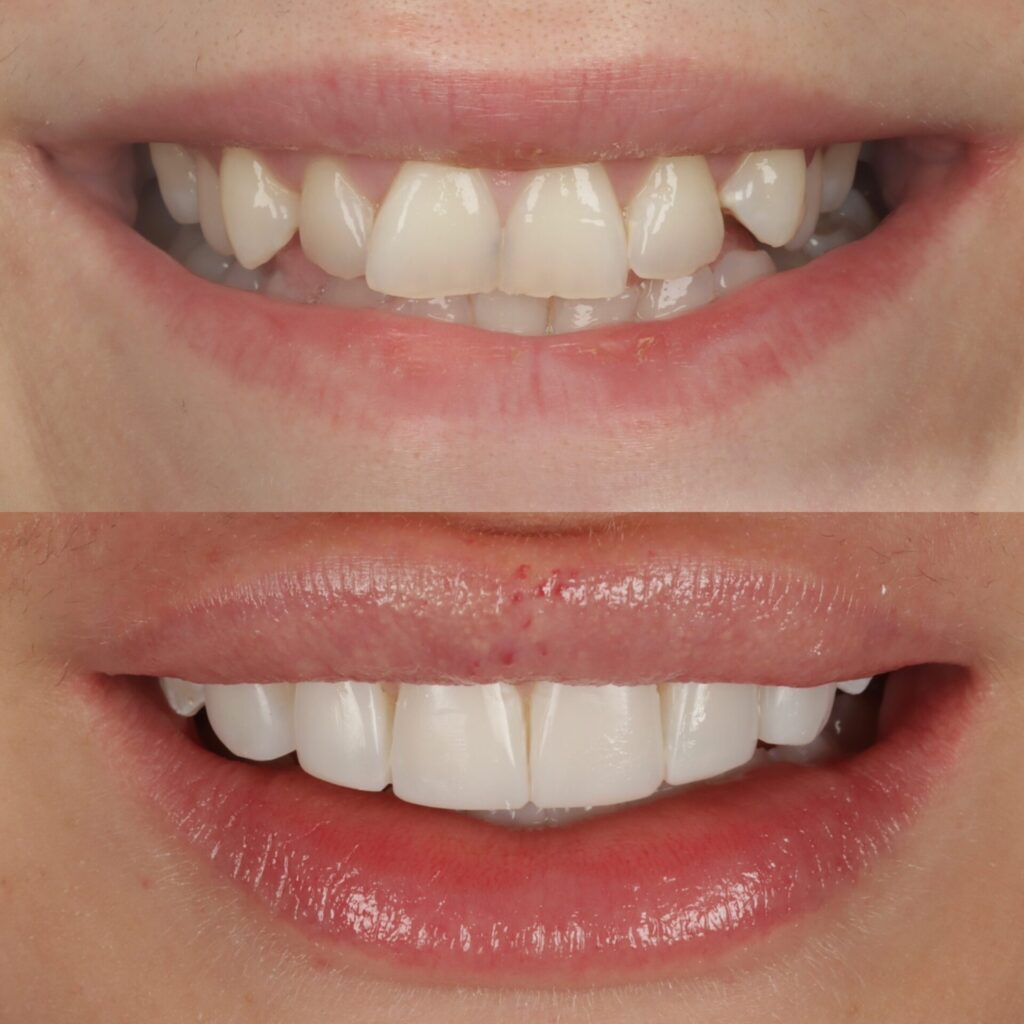
How long does it take?
Composite bonding is relatively quick compared to other cosmetic dental treatments. We usually set aside 30 minutes per tooth being treated, and the whole process from consultation to finish can be done in as little as 1 week.
How long does it last?
Composite bonding can lasts 3-7 years, depending on how you look after it.
If you have a diet heavy in staining foods, or any harmful habits such as teeth grinding during sleep or a nail-biting habit, this could cause them to break more easily and quickly.
Repairs usually require one visit back to your cosmetic dentist.
How do I pick the right dentist?
It is very important that you have composite bonding treatment done by an experienced clinician. Most dentists are unable to carry out this treatment to a high degree.
If done wrong, it can lead to staining building up very quickly, unnecessary chipping and even cause gum disease.
This is all before they even look good!
Make sure to look for before and after pictures of composite bonding cases carried out by the dentist.
Ours can be found using the instagram link below.
Treatment Timeline
Composite Bonding
Consultation
We’ll schedule you in for a consultation to discuss your concerns and assess your suitability for composite bonding. Here we will go over what is involved and costs of treatment. Following this, clinical photographs of your teeth will be taken and you will have a chance to explain what you want your teeth to look like. Your composite bonding appointment will be booked. Time: 30 minutesComposite Bonding Day
In this appointment, the first stage involves preparing the teeth. After this, the composite is placed and sculpted tooth by tooth. We finish by polishing the composite until we have achieved a high shine, and smooth finish. Time: From 30 minutes / ToothComposite Bonding Review (1 week Later)
This is a chance for you to discuss how you have found the composites. Here we will be able to adjust anything you dislike and give the composites a further polish, should they need it. Time: 30 minutesEvery case is unique depending on your needs, book in for a consultation by hitting the link below to get started on your journey.
Composite Bonding FAQ
What is Composite Bonding?
Composite Bonding is a type of dental bonding that involves using a tooth-colored composite resin that is applied to the surface of the teeth. This resin is hardened and then polished, resulting in a natural-looking and durable smile.
Is Composite Bonding Safe
Yes, Composite Bonding is a safe and effective procedure that is performed by a dental professional. The composite resin used is non-toxic and does not harm the teeth or gums.
What are the Benefits of Composite Bonding?
How Long Does Composite Bonding Last?
The lifespan of Composite Bonding can vary depending on a number of factors, such as the patient’s oral hygiene habits and the location of the bonded teeth. In general, Composite Bonding can last for several years with proper care and maintenance.
Is Composite Bonding Suitable for Everyone?
How Do I Care for My Composite Bonding?
Composite Bonding requires the same level of care and maintenance as natural teeth. This includes brushing twice a day, flossing daily, and visiting the dentist regularly for cleanings and checkups. It’s also important to avoid hard or sticky foods that can damage the composite resin.
If you’re looking to improve the appearance of your teeth, Composite Bonding may be a suitable option. Contact your dental professional today to learn more about this innovative dental treatment.

